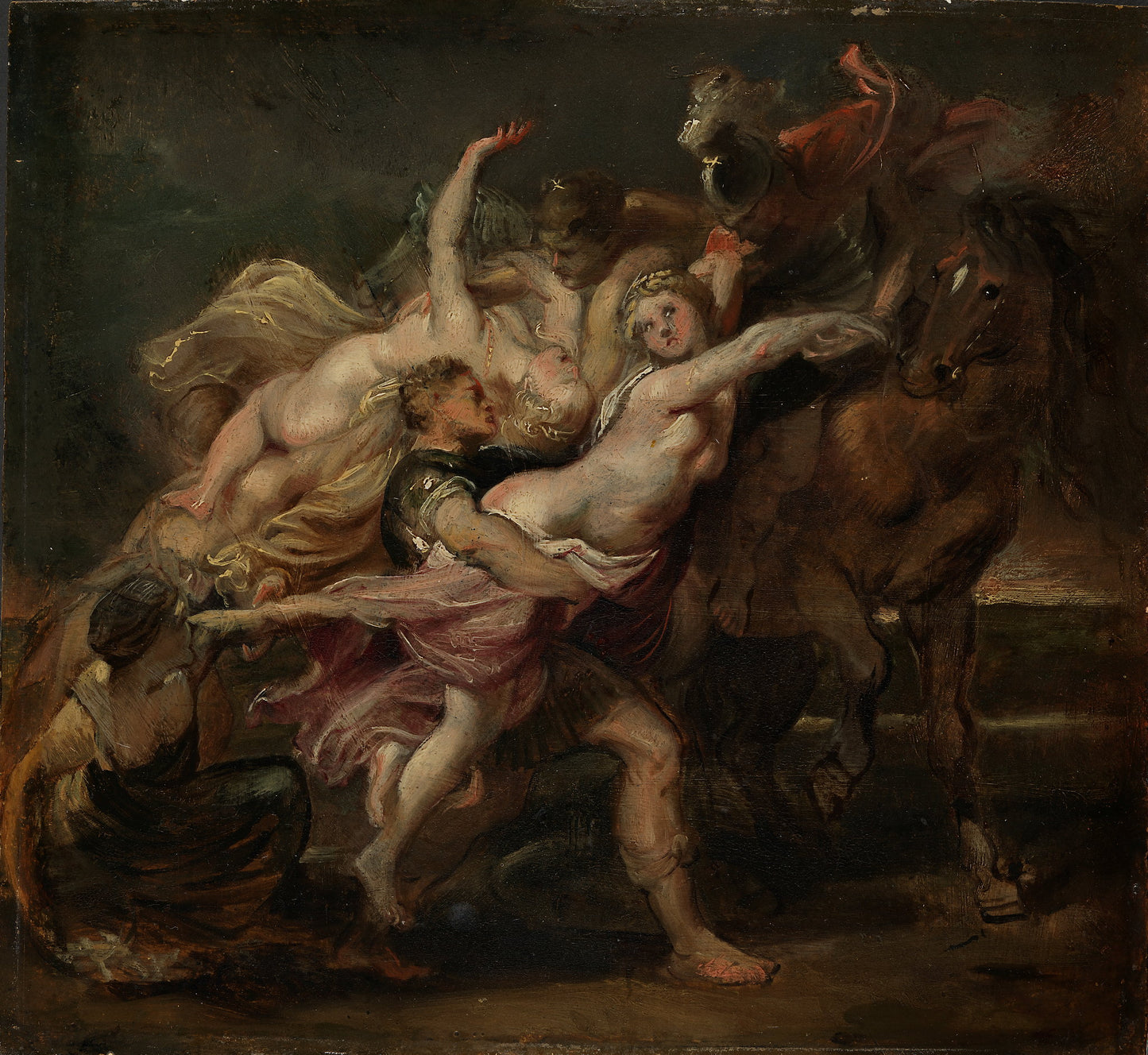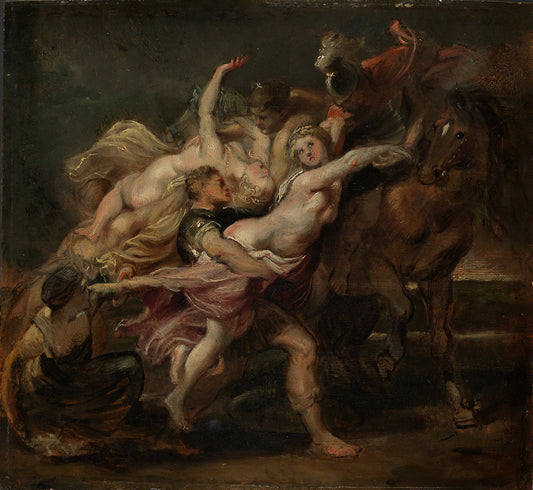Peter Paul Rubens
Castor and Pollux rob Leucippus' daughters
Castor and Pollux rob Leucippus' daughters
Couldn't load pickup availability
About the original:
Dating: 1610-1611
Other titles: The Rape of the Daughters of Levkippos (ENG)
Designation: Painting
Material and technique: Oil on wooden panel
Technique: Oil
Material: Wood
Dimensions: 27 x 29 x 0.5 cm
Subject: Visual arts
Classification: 532 - Visual arts
Motif type: Mythological scene or figure
Acquisition: Testamentary gift from Christian Langaard, received 1923
Inventory no.: NG.M.01394
Registration level: Single object
Owner and collection: The National Museum of Art, Architecture and Design, Visual Art Collections
Photo: Ivarsøy, Dag Andre

See all works
-
Castor and Pollux rob Leucippus' daughters
Vendor:Peter Paul RubensRegular price From 150,00 NOKRegular priceUnit price per

Peter Paul Rubens
Peter Paul Rubens was a Dutch painter who was active in the 17th century and is considered the leading painter of the Flemish Baroque style. He mainly spent his career in the city of Antwerp, but also visited Italy, where he studied the works of great masters such as Raphael, Michelangelo, Caravaggio, Titian and Correggio.
Rubens had a large studio where he worked with pupils and assistants, and he painted at least 2,200 pictures. Of these, approximately 600-700 of them were painted by himself. His paintings are known for being vibrant and dramatic, with a particular focus on lush, naked human bodies and powerful colours. His works include religious and mythological themes, landscapes and portraits. Rubens is known for several large religious paintings, including "The Raising of the Cross" and "The Descent from the Cross" in the cathedral in Antwerp. He also painted hunting scenes and mythological motifs with compositions rich in figures. Among his most famous works is the Medici Suite, a series of 24 pictures depicting the life of the French Queen Dowager Marie de Medicis. Rubens was also an outstanding portrait painter, and his double portrait of himself and his wife Isabella Brant, as well as his portraits of his second wife Hélène Fourment, are considered particularly impressive.
Towards the end of his career, Rubens began to explore landscape painting, and he painted several large and tranquil landscapes. In 1609, Rubens became court painter to Archduke Albrecht, and he married Isabella Brant. She died in 1626, and Rubens then married the 16-year-old Hélène Fourment in 1630. In addition to his artistic career, Rubens was also politically active and had diplomatic missions for his country. He bought the castle Steen in 1635.


